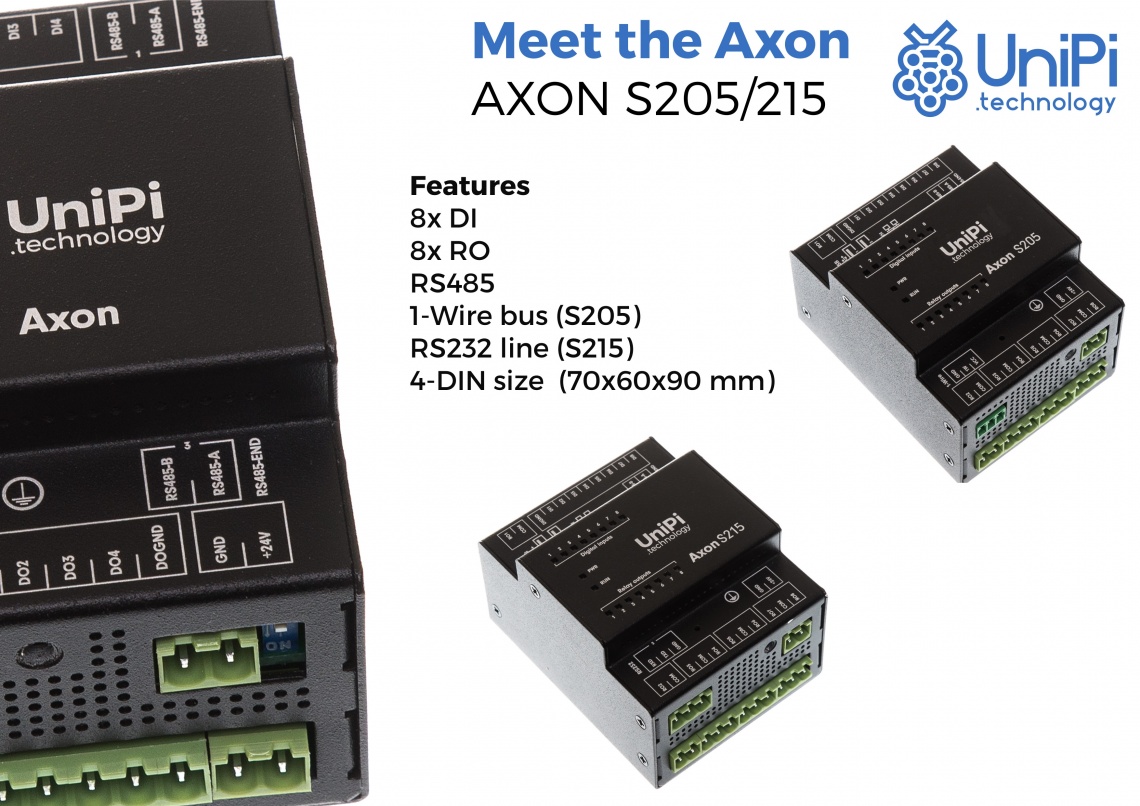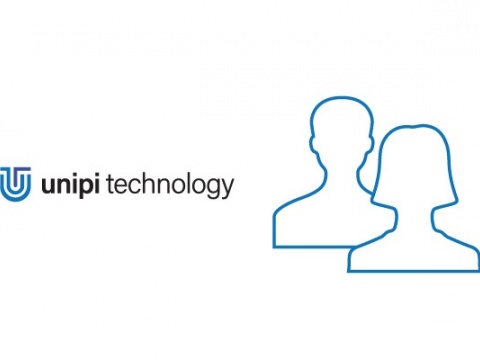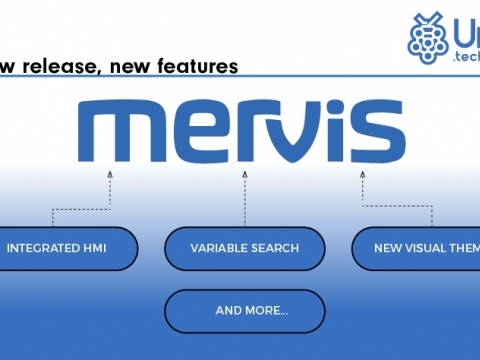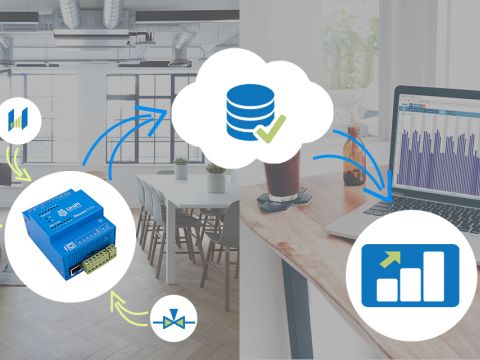
We bring you a first article from our new "Meet the Axon" series. In these articles, we will introduce you to models from our brand-new Axon PLC product range. Let's start with the Axon S205/215 - 8 digital inputs and 8 digital outputs combined with S-line compact dimensions!
Basic features of the S205/215
| Axon S205 | Axon S215 | |
| Digital inputs | 8 | 8 |
| Digital outputs | - | - |
| Relay outputs | 8 | 8 |
| Analogue inputs | - | - |
| Analogue outputs | - | - |
| RS485 line | 1 | 1 |
| RS232 line | - | 1 |
| 1-Wire bus | 1 | - |

S205/215's architecture is focused on digital inputs (DI) and relay outputs. It thus features 8 digital inputs and 8 relay outputs while retaining 70x60x90mm compact dimensions. That gives this model an excellent size-to-I/O number ratio. Regarding the difference between S205 and S215, their I/O architecture is identical. The only difference is in communication interface - the S205 features a single 1-Wire bus, while the S215 has the bus replaced by an RS232 line.
Inputs & Outputs
Digital inputs use binary logic; that makes them two-state inputs utilizing DC voltage pulses. Axon digital inputs are designed for 5-40V DC voltage range, receiving voltage pulses from corresponding external devices. Typical examples of such devices are digital lightning switches, magnetic contacts in windows or doors, motion sensors etc. It is also possible to connect pulse meters (energy meters, water flow meters etc.)
Relay outputs of the S205/215 are dimensioned for a maximum voltage of 250V AC/30V DC with a maximum current of 5A. The main purpose of these relays is switching of two-state external devices through alternating or direct voltage. Typically, relay outputs are used to switch boilers, electric motors, water heaters or other, stronger relays.
Additional functionality
Digital inputs of all Axon units are by standard equipped with a pulse counter. S205/215's inputs (as well as on all models with DI/RO combination) additionally feature so-called Direct Switch functions, named Polarity and Toggle.
> Polarity allows the user to set the output value of relays to either match or negate the value from digital inputs. This function is suited for sunblind control (sunblinds are moving as long as the button is held)
> Toggle serves for switching the output state with each input signal, making the unit excellent for lightning control via digital switches.
Communication interface
S205/215 are both equipped with the RS485 serial line for connecting of external devices or extension modules (i.e. the Neuron xS line). One line can communicate with up to 256 devices, using the Modbus RTU protocol.
1-Wire bus featured on the S205 is designed to a passive reading of data from corresponding 1-Wire sensors (humidity sensors, temperature sensors etc.). One bus can receive data from up to 15 sensors at once (provided a suitable 1-Wire hub is used).
S215 has the 1-Wire replaced by the RS232 line. This serial line is used for asynchronous short-range communication with fixed transmission speed and is often utilized to communicate with older external devices.
Practical use example
The S205/215 are ideal for smaller home automation projects thanks to their small dimensions and a high number of I/Os. These projects can contain following examples of practical use of the S205/215 and it's I/Os.
Digital inputs: external thermostat, water flow meter, digital lighting switches
Relay outputs: sunblind/sunscreen control, automatic gate control, floor heating switch, stronger relays switching boiler, water heater and circulation pump.
1-Wire bus: a suite of temperature and/or humidity sensors, mounted both internally and externally.
RS485: connection of a smart energy meter
RS232 line: connection of a touchscreen control panel for an easy control of the whole system



